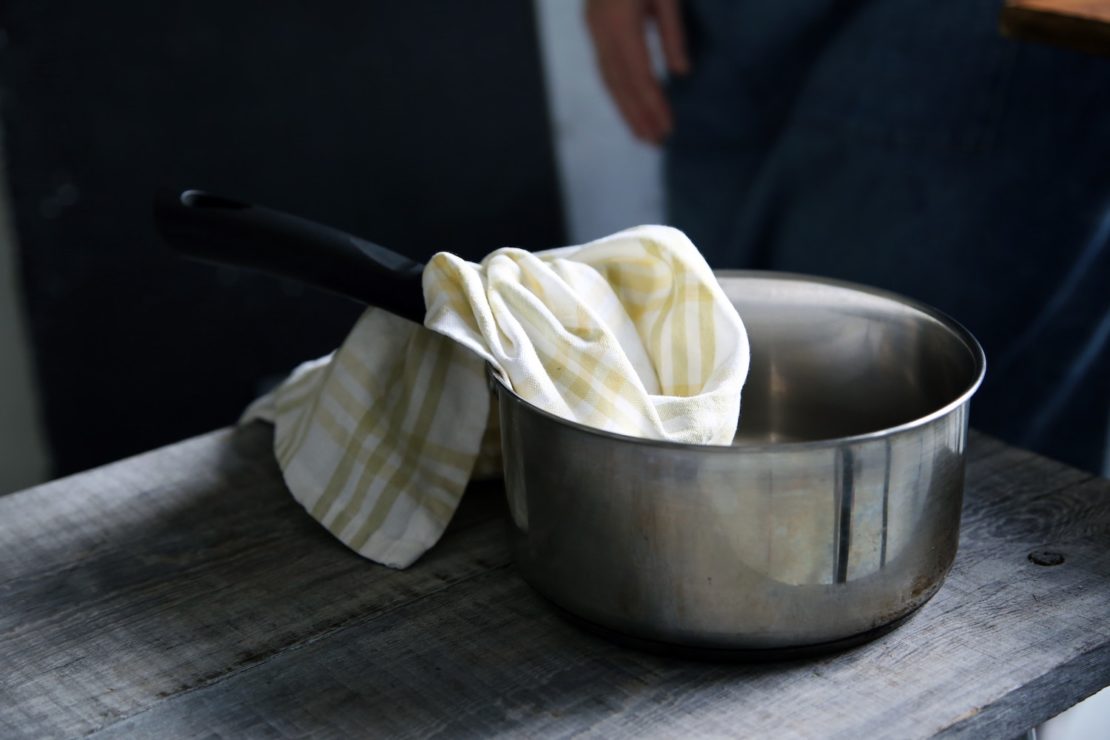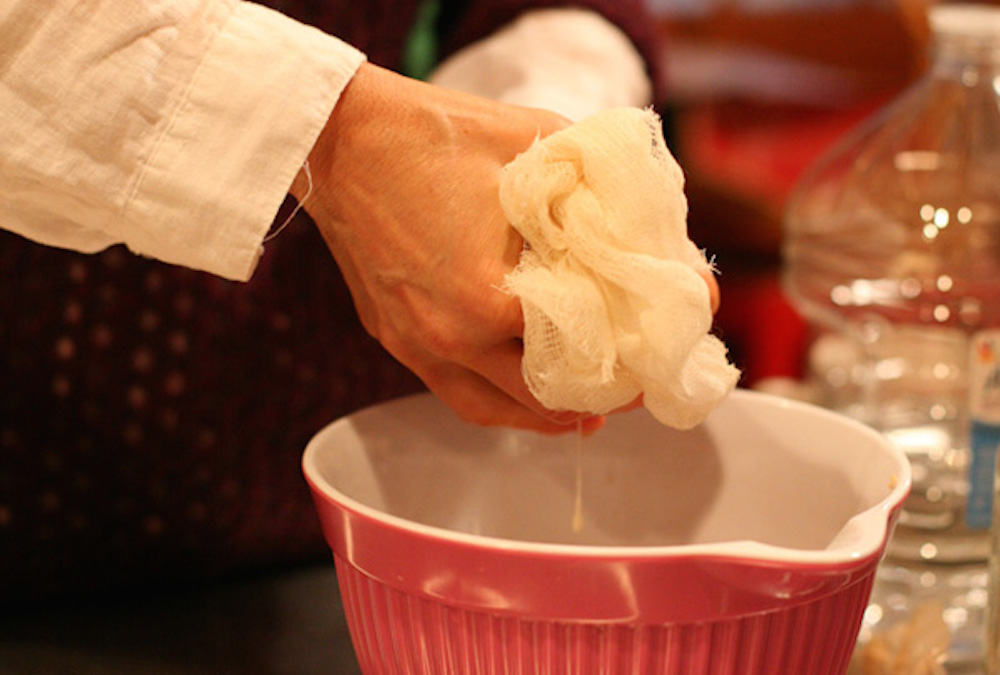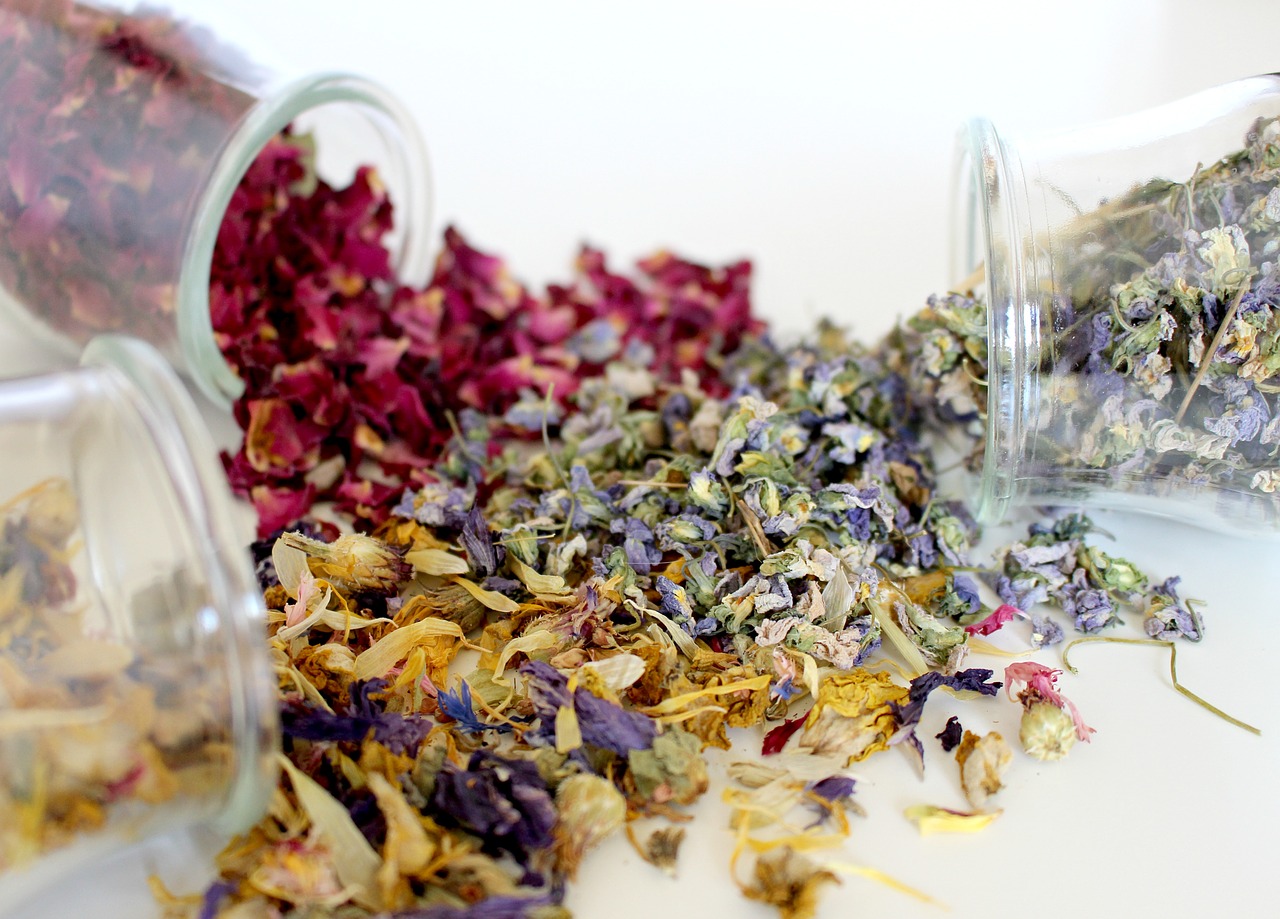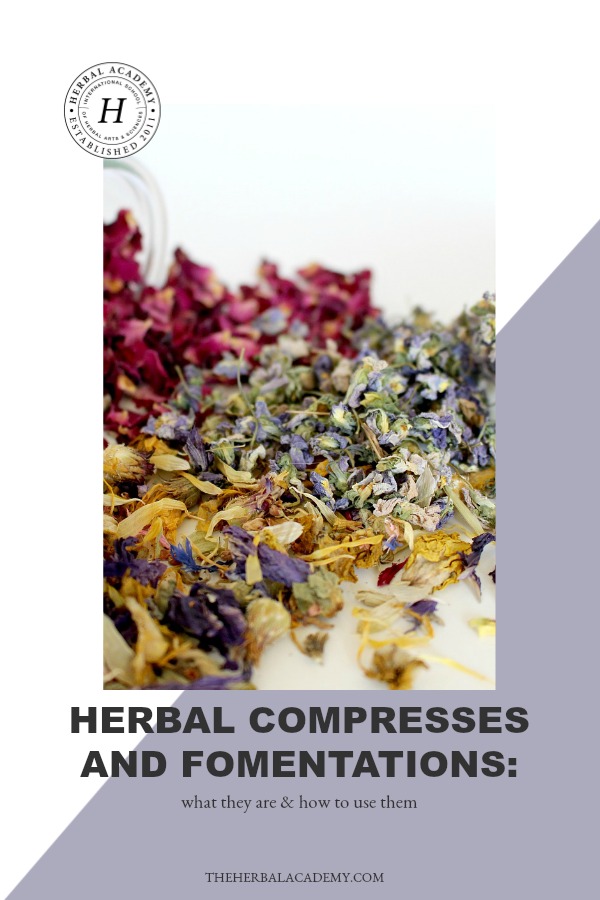
Herbal Compresses and Fomentations: What They Are & How To Use Them
Pulled muscles and painful spasms, a bad run-in with the pavement, or a nasty cough all call for a little extra loving care—a gentle touch. The somewhat lost art of topical herbal applications can offer that loving care in the soothingly useful form of herbal compresses and fomentations.
These applications are simply made by soaking a cloth in a strong herbal solution and laying it over the area needing attention. They are often applied warm. Herbal compresses and fomentations can be used to help soothe injuries and inflammation and allow the body to focus on healing. They work by helping to bring blood to the area or directing it away depending on the temperature used, while the addition of herbs can help to enhance these actions (Tilgner, 1999).
How to Make Herbal Compresses and Fomentations
Herbal compresses and fomentations are simple to make. Both preparations start with a strong herbal infusion or decoction. Herbal infused oils or vinegars can also be used. If you wish, you can even add tinctures to the blend. This can be especially helpful for using what is readily on hand, as many times we are guided by what we have available in the moment.
Basic directions for making herbal compresses and fomentations:
- Use 3 to 4 tablespoons of herbs per cup of water.
- If you are using roots, barks, or berries, begin by making a decoction of this hard plant material (find instructions here). Next, add lighter plant material (such as leaves and flowers) to the finished decoction and cover with a lid to keep any volatile oils from escaping into the air. Let steep for up to 30 minutes.
- If you are just using lighter herbs such as leaves or flowers, place the herbs directly in a heat-proof container, cover with boiling hot water, and cover. Let steep for up to 30 minutes.
- Strain the herbs out of the liquid. Use cheesecloth to strain out any particles if making a compress for skin issues.
- Add up to 30 drops of tincture per cup of infusion.
- Dip a piece of clean cloth in the warm infusion and then squeeze out excess liquid.
- Apply the compress or fomentation and feel the soothing relief!
- When the compress cools, dip it into the warm infusion again, squeeze out excess, and reapply.
Follow the directions above as a guideline, using the herbs that best suit your situation. You can make a large batch if you wish. This is a good idea if you have a larger area to cover or want to do repeated applications. Extra liquid will keep in the fridge for up to 2 days. It can be re-warmed as needed, making repeated applications easier.
Applying a Compress

Cold Compresses
Cooling compresses are wonderful when pain presents with inflammation and heat such as headaches, burns, bruises, bites, sore throat, and road rash (Mars, 1999). This type of compress constricts the blood vessels and eases inflammation to soothe the area (Tilgner, 1999).
To apply a cold compress, simply wait for the tea or decoction you have made to cool. Then soak a clean cloth in the solution, wring out the cloth, and apply to the area. As the cloth warms to body temperature, it should be changed out with a new clean, freshly soaked cool cloth.
Hot Compresses
A hot compress helps to bring blood to the area while easing muscle tension (Tilgner, 1999). This makes hot compresses helpful for soothing strained or pulled muscles, muscle spasms, menstrual pain, headaches, breast pain such as mastitis, sore throats, and even congested lungs (Romm, 2003).
To apply a hot compress, let the herbal brew you have made cool to a temperature so that you can safely work with it. Soak a cloth in the liquid until saturated and carefully wring out the cloth. Gently apply to the affected area. Be sure that the compress is not so hot that it will burn the skin or make the person uncomfortable. Leave the compress on until cool and repeat as needed.
Let the situation and person guide you toward the best choice of temperature to use when applying a compress. As herbalist Brigitte Mars explains, “the best indicator [of which temperature to use] is to ask the person needing treatment if they think cold or hot will give best relief” (Mars, 1999, pg. 130).
Leave the compress in place for at least 10 minutes. Longer application can be even more helpful. The cloth can be changed out as it cools (for hot compresses) or warms (for cold compresses). Repeated application 2 to 3 times per day may be especially helpful for bringing soothing relief in persistent situations.
Applying a Fomentation
Fomentations are generally very relaxing for muscle spasms, pain, and can help to ease strained muscles. The definition of a fomentation is varied among herbalists. For example herbalist James Green says that “A fomentation (a.k.a. compress) is a form of poultice that is composed of liquids or lotions, absorbed in woolen or cotton cloths and usually applied hot” (Green, 2000, pg. 471). Rosemary Gladstar explains that a fomentation is made by rotating hot and cold compresses (Gladstar, 2012). I was taught that a fomentation is a compress that is kept hot. This definition of a fomentation will be explored below!
Fomentations are applied in the same way a hot compress is applied, with the herbal infusion-soaked cloth placed first on the affected area and then covered with a towel or even a piece of plastic wrap. Follow with a hot water bottle (not too hot please!), a hot rice pack, or heating pad. Cover this with a towel as well to seal in the heat and keep everything in place. As with the hot compress, be sure that the fomentation is not so hot that it is burning the skin or uncomfortable.
Strive to leave this whole set-up on for 20 to 30 minutes. Longer is fine, especially if it feels good!
Herbs to Choose

Recently a family member took a hard fall during while going over a ski jump. He came home banged up with badly bruised ribs and a pulled muscle in his shoulder. Wanting to help soothe him as soon as possible, I made a quick visit to the herb cabinet to see what herbal allies I had on hand. A quick search yielded powdered ginger (Zingiber officinale), St. john’s wort flowers (Hypericum perforatum), and lavender blossoms (Lavandula spp.) which I made into a strong infusion. A few squirts of both Solomon’s seal (Polygonatum biflorum) and cramp bark(Viburnum opulus) tinctures also found their way into the brew. We applied this as a hot fomentation to help bring blood to the area and ease the painful muscle spasms he was experiencing.
Herbs with antimicrobial and vulnerary actions can be employed for soothing rashes, abrasions, and other skin afflictions.
To help soothe the skin and encourage healing, you might employ marshmallow (Althaea officinalis), rose (Rosa spp.), Calendula (Calendula officinalis), and lavender (Lavandula spp.) (Rose, 2007). To ease pain and encourage relaxation, consider anti-inflammatories and antispasmodics like meadowsweet (Filipendula ulmaria), cramp bark (Viburnum opulus), mullein (Verbascum thaspus), ginger (Zingiber officinale), and linden (Tilia spp.). Circulatory stimulants such as arnica (Arnica montana) – do not use on broken skin, ginger (Zingiber officinale), and yarrow (Achillea millefolium) are used by herbalists to help bring blood to the area and clear stagnation such as with bruising (mcdonald, n.d.).
Please keep in mind that some herbs can cause contact dermatitis and may also have contraindications for use in certain situations such as with medications or pregnancy. It is important to research the herbs you choose before use!
Herbal compresses and fomentations may be easy to overlook as an herbal preparation in our rushed modern schedules, however they have great potential for helping to ease discomfort. Keep these age-old preparations in mind for the next time you find yourself in need of that little extra touch, as a bit of herbal loving care goes a long way!
Did you know that our courses teach how to make a wide array of herbal preparations? If you want to discover more, check out our online courses and enjoy learning how to get practical hands-on use with herbs!

REFERENCES
Gladstar, R. (2012). Rosemary Gladstar’s medicinal herbs, a beginner’s guide. North Adams, MA: Storey Publishing.
Green, J. (2000). The herbal medicine maker’s handbook. Berkeley, CA: Crossing Press.
Mars, B. (1999). Natural first aid. Pownal, VT: Storey Books.
mcdonald, j. (n.d.). Herbs for back and joint pain. Retrieved from http://www.herbcraft.org/backpain.html
Romm, A. (2003). Naturally healthy babies and children. Berkeley, CA: Celestial Arts.
Rose, K. (2007). Choice Injury Herbs. Retrieved from http://kivasenchantments.com/choice-injury-herbs.html
Tilgner, S. (1999). Herbal medicine from the heart of the earth. Creswell, OR: Wise Acres Press, Inc.








